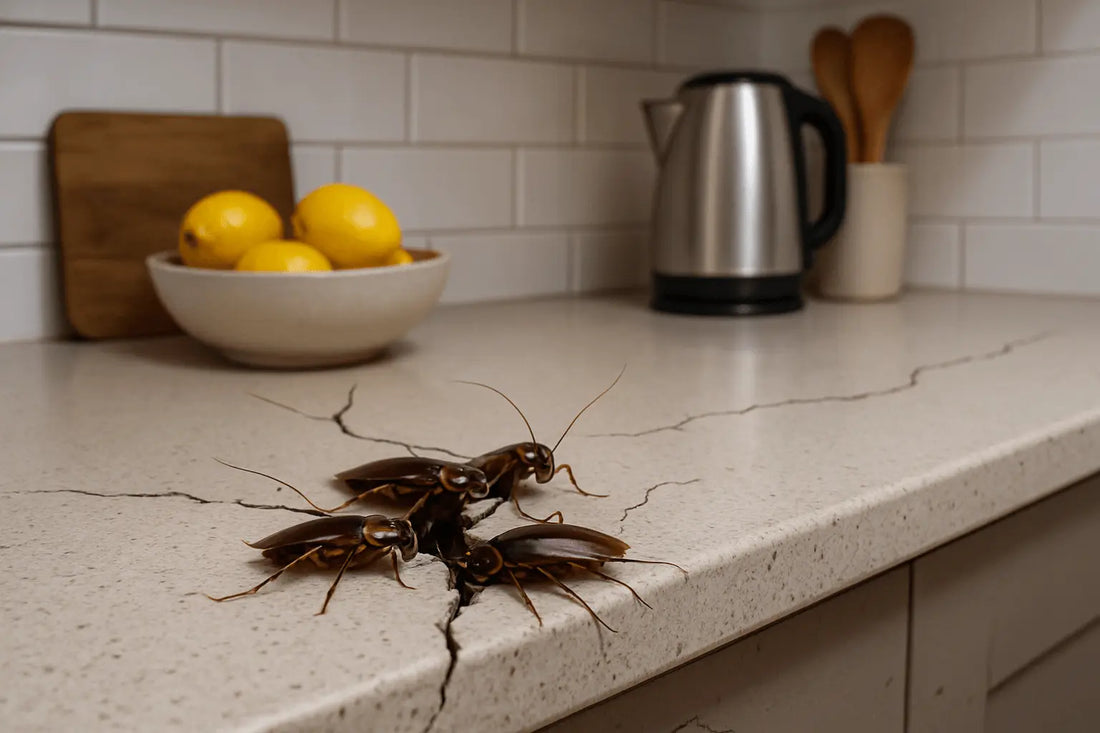
Why Do Cockroaches Keep Coming Back? The Science Behind Persistent Infestations
Share
Cockroaches are among the most resilient pests on Earth, and if you're dealing with repeated infestations in your home or business, you're not alone. Understanding why these persistent invaders keep returning is the first step toward achieving long-term pest control success.
Despite your best efforts to eliminate them, cockroaches seem to reappear like an unwelcome surprise. The truth is, these ancient survivors have evolved sophisticated strategies that make them incredibly difficult to eradicate permanently. Let's explore the science behind why cockroaches keep coming back and how you can break this frustrating cycle.
The Biology Behind Cockroach Resilience
Cockroaches have survived for over 300 million years, making them one of the most successful species on our planet. Their remarkable resilience stems from several biological advantages that make them incredibly difficult to eliminate completely.
These pests can survive without food for up to a month and without water for a week. They reproduce rapidly, with a single female German cockroach capable of producing up to 400 offspring in her lifetime. Most importantly, cockroaches have developed resistance to many common pesticides, making traditional control methods increasingly ineffective.
Their flat bodies allow them to squeeze through cracks as thin as a quarter, giving them access to countless hiding spots throughout your property. They're also primarily nocturnal, meaning they're most active when you're least likely to notice them, allowing infestations to grow undetected.
Hidden Breeding Grounds: Where Cockroaches Multiply Undetected
One of the primary reasons cockroaches keep returning is their ability to establish breeding colonies in areas you might never think to check. These hidden sanctuaries allow populations to rebuild even after you believe you've eliminated the problem.
Common hidden breeding areas include behind kitchen appliances, inside wall voids, under sinks, in electrical outlets, and within cardboard boxes or paper storage areas. In GCC countries, where air conditioning systems are essential, cockroaches often establish colonies within HVAC ducts and units, spreading throughout buildings undetected.
Female cockroaches carry their egg cases (oothecae) until just before hatching, protecting the next generation from most surface treatments. A single missed egg case can restart an entire infestation within weeks. This is why surface sprays often provide only temporary relief – they may kill visible adults but miss the reproductive cycle entirely.
The Attraction Factors: What Draws Cockroaches to Your Space
Understanding what attracts cockroaches to your property is crucial for long-term prevention. These pests are drawn by three primary factors: food, water, and shelter. Even the smallest crumbs or moisture sources can sustain entire colonies.
In Middle Eastern climates, where temperatures can be extreme, cockroaches are particularly attracted to air-conditioned environments that provide consistent temperature and humidity levels. Kitchens, bathrooms, and laundry areas offer ideal conditions with readily available water sources.
Cockroaches are also attracted to organic matter, including pet food, garbage, grease buildup, and even soap residue. They can feed on unexpected items like book bindings, wallpaper paste, and fabric sizing. This diverse diet means that even seemingly clean environments can still support cockroach populations.
Why Traditional Methods Fail: The Limitations of Common Approaches
Most homeowners and businesses rely on surface sprays or traps that only address visible cockroaches rather than targeting the entire population structure. These methods often create a false sense of security when adult cockroaches disappear temporarily, only to have the infestation return stronger than before.
Traditional pesticides typically lose their effectiveness within days or weeks, requiring constant reapplication. Many cockroaches have also developed resistance to common active ingredients, making these products increasingly ineffective. Additionally, surface treatments can't reach the deep cracks and crevices where cockroaches actually live and breed.
Baits can be effective but require precise placement and regular monitoring. They also depend on cockroaches finding and consuming the bait, which doesn't always happen if alternative food sources are available. This hit-or-miss approach explains why many people experience recurring infestations despite their best efforts.
The Science of Long-Term Elimination: Advanced Gel Technology
Modern pest control science has developed more sophisticated approaches that target cockroaches' biology and behavior patterns. Advanced gel formulations like Super Gel use Fipronil, a powerful active ingredient that works through both contact and ingestion, creating a domino effect throughout the colony.
Unlike traditional sprays, professional-grade gels are applied directly into cracks, crevices, and other areas where cockroaches actually live. The gel remains active for extended periods, continuing to eliminate cockroaches as they encounter treated areas. This approach targets the entire population structure, including hidden breeding areas that other methods miss.
The key advantage of advanced gel technology is its ability to break the reproductive cycle. When cockroaches come into contact with or consume the gel, they carry the active ingredient back to their hiding places, affecting other colony members including egg-carrying females. This creates a cascading elimination effect that can eradicate entire populations.
References
WHO Guidelines on Household Pest Control
RESISTANCE MECHANISMS IN COCKROACHES - THE KEY TO CONTROL STRATEGIES
Stop the cycle of recurring cockroach infestations with Super Gel's proven formula. Our Fipronil-based gel provides one full year of guaranteed protection, targeting hidden breeding areas that other methods miss.
